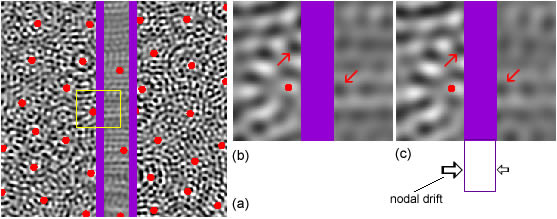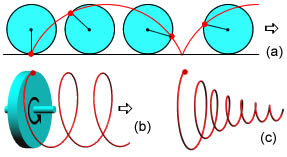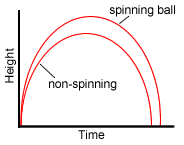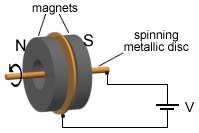8 - Free Energy |













Here we look at the concept of free energy from the aether perspective, particularly as it relates to charge and spiral motion.
Free Energy
The idea of free limitless energy has been around for some time now.
It holds the promise of solving our energy needs without compromising our
environment, while alleviating poverty and suffering.
We should be making free energy research a priority rather than giving it the
scant support it is currently receiving.
We must emphasize that by free energy we do not mean creating energy out of
nothing, but rather tapping into the enormous stores of energy that we believe
the universe contains.
The erroneous belief that free energy implies a violation of conservation of
energy laws has discouraged traditional scientists from doing any serious
research in this area.
The concept of free energy is however starting to gain respectability among the
scientific community as a result of recent developments in physics dealing with
zero-point energy.
As discussed elsewhere, the latest theories suggest that the vacuum contains an
enormous amount of energy, only a small portion of which would be enough to
supply all the worlds energy needs many times over
[1].
It is ironic that physicists who would normally denounce the idea of creating
something out of nothing have little difficulty in accepting the zero-point
energy concept. The ultimate in something out of nothing theories! After all,
we are talking about a supposed vacuum from which emerge charged particles and
energy out of nothing - courtesy of the uncertainty principle.
Even though the zero-point fluctuations are allowed by the uncertainty
principle it does not explain why they should arise in the first place. If one
accepts a causal universe then there has to be some underlying mechanism or
cause that gives rise to these fluctuations. The uncertainty principle is a
condition not a cause.
Aetheric vibrations are a much more reasonable explanation for zero-point
fluctuations.
More and more scientists are trying to work out ways to tap into this
zero-point energy.
One of the main ideas being that because the zero-point fluctuations impinge
on matter from all sides equally we are not normally aware of this
enormous energy. However, if one were able to create a coherence in the
fluctuations one might be able to create a net force and therefore extract
energy from the vacuum.
The Casimir effect gives us a possible way of doing this. This idea has been
taken up by a number of researchers, see for example the research being
done at Quantum Fields [2].
As discussed in our Matter section, the 4D
waves model presented here has many similarities to the zero-point
fluctuations. The next section demonstrates this by showing that
the Casimir effect can be explained within the context of the 4D wave
model.
Like the zero-point fluctuations, the 4D waves would be expected to contain
large amounts of energy, it is just that we are not directly aware of this as
the 4D waves oscillate along the 4th dimensional axis.
However, we do not think that the Casimir effect is the best or the easiest way
to extract energy from the 4D waves.
As outlined in the Matter section, charge is viewed as an aether vortex moving
into and out of the 4th dimension.
There is a 4D component to charge and therefore a coupling to the 4D waves.
Thus there is the possibility of tapping the 4D wave energy through the motion
of charge.
The "Free Energy and Charge" item below examines this concept in greater
detail.
Another way of coupling to the 4D waves is through the movement and rotation of matter, in particular the spiral motion. We look at this in more detail in the "Free Energy and the Spiral" item below.
4D Wave Explanation of the Casimir Effect
It has been shown experimentally that
when two metal plates are separated by a short distance (of the order of a
micro meter) there exists a force that draws the two plates together.
This has been attributed to the effects of zero-point energy fluctuations as
described by Quantum Electrodynamics.
We can show however that this effect can readily be explained within the
context of the 4D wave model presented here.
The best way to demonstrate this effect is through a computer simulation.
Fig 8.1 shows the arrangement used in the calculation.

Fig 8.1 Demonstration of the 4D wave
Casimir effect. (b) is an enlargement of the yellow
area of (a). (c) is the same area a short time later (~20% of the wave
period).
The purple slabs represent two metal plates surrounded by a more or less random
distribution of spherical wave generators (red dots). The pattern of white
and dark areas show the interference pattern produced by superimposing all the
individual wave generator contributions.
As with other examples, the white and dark regions represent the
amplitudes of movement along the 4th dimensional axis and not
motion in 3D space.
The 4D wave amplitudes produced by the generators or primary points are
assumed to drop off as the inverse of distance in 3D space (1/r variation),
which is consistent with energy conservation principles.
Also, it is assumed in the above example that there is some attenuation of the
4D wave amplitudes as they pass through a plate.
This gives rise to the 'duller' region between the plates in Fig 8.1(a),
signifying lower average vibration amplitudes in that region.
The result of all this will be a greater wave contribution from the side of the
plate that is facing away from the second plate as compared to the side facing
towards the second plate.
Consequently there will be a drift of vibration nodes towards the plates from
the outside which is greater than the drift towards the plates from the inside
region, Fig 8.1(b) & (c).
As the red arrows show, there is a noticeably larger drift of nodes from the
left (outside) than from the right (inside).
This is similar to the drift of nodes surrounding a planetary body as discussed
in the Gravity section.
If we assume that the particles have a tendency to 'stick' to low vibration
nodal points, as outlined in the previous sections, we can see that this nodal
drift will produce a force tending to push the plates together. Very similar to
the way a drift of nodes produces a gravitational force between two bodies.
Gravity could be thought of as a long range Casimir effect, or vice versa.
Fig 8.2 shows what happens when we increase the separation of the plates of Fig 8.1.

Fig 8.2 As for Fig 8.1 but with
double the plate separation.
Increasing the plate separation also greatly increases the number of wave
generators within the plates, thereby creating a more equal contribution of
wave amplitudes from the outside and inside of a plate.
As Fig 8.2(b) & (c) show, this creates a much more equal drift of nodes
from both sides of a plate. The result is that there is a greater balance of
forces on both sides of a plate and therefore a much smaller force tending to
push the plates together, in accordance with experiment.
There are similarities between the 4D wave and zero-point energy treatments of
the Casimir effect.
In QED also there is a greater density of zero-point fluctuations outside than
inside the plates leading to a force that pushes the plates together.
However, the way this imbalance of wave strength comes about is different in
the two cases.
In standard QED theory the conducting plates give rise to boundary conditions
on the surfaces which mean that only the zero-point fluctuations that have a
wavelength of a half integral multiple of the plate separation are allowed
within the plate region. Giving rise to a greater density of fluctuations
outside than inside the plates.
The QED explanation of the Casimir effect implies conducting plates.
The 4D wave theory presented here however predicts a Casimir type force for
plates of any material.
This provides a direct test of the 4D wave model.
Free Energy and Charge
As already mentioned, our model of charge as a 4th dimensional vortex means
that it has strong coupling to the energy of the 4D waves and therefore
makes it a prime candidate for tapping into these enormous stores of
energy. Indeed our model holds that it is the action of the 4D waves that
drives the electrons in their atomic orbitals.
In fact the vortex flow itself would contain a lot of energy, maintained by the
4D aetheric vibrations, in the same way that tornadoes contain a lot of energy.
Magnetic aether flows are in the same category as they are a direct result of
moving charges.
Normally one cannot extract free energy out of charge flow as these processes
are cyclic in nature, what you gain in one part you lose in another. However if
one could create an asymmetry in the cycle it is conceivable that one could
extract useful energy directly from charges. Tom Bearden
[3] and John Bedini [4]
seem to have been able to achieve just that.
One common theme that we observe with many situations that produce anomalous
energy outputs or forces is the idea of rotation combined with translation.
One example of this is the anomalous effects observed with plasmas under
certain conditions. The Russian physicist Chernetskii has reported that when
ions are forced to undergo a cycloid motion within a plasma device anomalous
energy outputs have been observed [5].
As Fig 8.3(a) illustrates, the basic cycloid motion is the path traced by a
point on a wheel rolling in a straight line. This is in effect a combination of
rotation plus a translation perpendicular to the rotation axis. Precession is a
particular case of cycloid motion where the translation follows a circular
path.
We could also translate along the axis of rotation which would give us the
helical spiral motion, Fig 8.3(b). The vortex is a particular case of the
helical spiral where the radius of rotation decreases with the translation, Fig
8.3(c).
The most general motion would have both of these translations combined.

Fig 8.3 Different forms of rotation
plus translation. (a) Cycloid - translation is at right angles
to the rotation axis. (b) 3D Spiral - translation is parallel to the
rotation axis.
(c) Vortex - as for (b) but with a decreasing radius of
rotation.
So perhaps it is understandable that cycloid motion of charges produces
anomalous effects in plasmas, our model of charge in fact involves a kind
of rotation of aether particles represented by the 4D vortex.
It is conceivable that this type of motion creates a coherence in the forces
that the 4D waves exert on the charges, giving us a way of tapping into the
energies of the 4th or even higher dimensions.
This is further supported by other cases where cycloid motion has produced
anomalous forces.
Prof. Laithwaite has discovered that when a spinning gyroscope is forced to
undergo a cycloid type motion it exhibits inertial/gravitational anomalies.
As discussed in the Inertia section, a
spinning body is expected to generate a 4D aether vortex centered around the
rotation axis.
This however is similar to what happens in the case of a moving charge. As
discussed in the Magnetism section, a
moving charge is assumed to generate a 4D vortex with a preferential rotation
around the direction of motion.
Given the similarities of aether motion for the two cases it is perhaps not
surprising that both charges and gyroscopes produce anomalous effects when
forced to undergo cycloid motion.
An outstanding example that has produced free energy outputs, as well as antigravity, is the Roschin & Godin device [7], itself a modified version of the Searl SEG machine [8]. It also makes use of cycloid type particle motion within the device.
The above ideas relating to cycloid motion of charge would suggest that an
arrangement of wires or conductors that forces electrons to flow in a cycloid
or spiral motion should produce anomalous effects.
The same outcome could also be achieved by a simple arrangement of conducting
wires that is forced to rotate or move in irregular paths.
A natural extension of that is to the area of magnetic fields.
Given that magnetic fields are generated by moving charges we already have a
form of rotation and translation of aether. One would expect therefore that
rotating or moving magnets in a non-uniform way would generate
anomalous effects.
There are plenty of examples of such anomalies in magnetic devices that have
been reported by various researchers. Some examples are, the Adams motor
[9], Newman device [10],
Johnson motor
[11], the Lutec1000 [12], among
others [13].
Free Energy and the Spiral
Following on from the previous section, we examine the rotation plus
translation idea for the spiral case.
Rotation plus translation produces anomalous effects not only with moving
charges but also with neutral macroscopic objects.
The spiral motion (Fig 8.3(b),(c)) in particular seems to be involved in many
cases.
A prime example of this is provided by the spinning ball experiments of Bruce
DePalma [14].
He projected two metal balls upwards inside a vacuum container, one spinning at
some 20,000 rpm and the other non-spinning, and observed any differences.
He discovered that the spinning ball moved higher and further and also fell
faster than the non-spinning one, Fig 8.4. This effect has since been
verified by other researchers
[15].

Fig 8.4
DePalma's spinning ball experiment.
Here we have a rotation plus translation of particles forming a spiral motion
that produces effects defying standard theories.
From an aether particle perspective we have a 4D aether vortex being moved
parallel to the axis of rotation.
One might therefore expect that keeping the rotating body still and moving the
aether along the axis of rotation would also produce some sort of anomalous
energy effect. Although the two cases are not exactly the same there is a
symmetry between the two arrangements.
Given that our aether model assumes the magnetic field to be a movement of the
aether, see Magnetism, it would make sense that a magnetic field applied along
the axis of rotation of a spinning body would produce some such effect.
This has in fact been observed in the devices invented by Bruce DePalma, which
are based on the Faraday disc [14].
The basis of these devices is a rapidly spinning metallic disc placed between
the poles of magnets, Fig 8.5.

Fig 8.5
Faraday disc. The principle behind DePalma's N-Machine overunity generator.
This arrangement produces a voltage difference between the
axis and edge of the rotating disc.
DePalma was able to generate free energy from such a device.
Paramahmsa Tewari has also demonstrated a free energy device based on a
variation of the Faraday disc principle [16].
Another good example of the spiral principle is the water vortex effect
observed by Schauberger [17]. He claimed that when water was forced to undergo a vortex type
motion, by the use of spiralling tubes, it caused a blue glow to appear at the
center of the vortex, as well as creating excess energy outputs.
An extension of the Schauberger vortex concept is the water vortex propulsion
device designed by Alexander Frolov [18],
based originally on Spartak Poliakov's ideas. He demonstrated an 'inertialess
drive' that converts rotary vortex type motion into a linear force.
We also note that Arie DeGeus has been able to obtain free energy outputs,
among other unusual effects, by use of a plasma vortex
[19].
From the perspective of the aether model there are a number of factors that
come into play in determining the forces and energies involved in spiral
motion.
There is the 4D aether vortex induced by rotational motion, as described in the
Inertia section, giving rise to etheric pressure towards the axis of
rotation.
There are forces involved with node jumping due to rotation and acceleration.
Also, if we assume that the aether is the carrier of 4D waves then one would
expect that a moving aether would create phase shifts in the 4D waves which in
turn would give rise to nodal shifts.
The details of the forces and interactions are complex, however we would say
that for anyone interested in tapping into the free energy of higher dimensions
rotation plus non-uniform translation or spiral motion is a good place to
start.
It is interesting to speculate on the possibility of the spiral being a prime
mechanism by which living things are energised from higher dimensional sources.
We have already alluded (Atoms&QM section)
to the fact that psychics have observed vortexes of energy on the chakra
centres of the human body. Vortexes which we believe channel energies from
higher dimensions.
We think this mechanism applies to all living things, including plants.
If one considers the flower for example, we marvel at the rapid burst of growth
and development from bud to full flowering in all its beautiful patterns.
We think that there is more to this than just chemical reactions. We believe
that some form of energy spiral at the flower connects it to higher dimensional
energy patterns.
References
[1] Thomas Valone, “Understanding Zero Point Energy",
users.erols.com/iri/ZPEpaper.html
[2] Quantum Fields LLC, “R & D in Vacuum Fluctuations”,
www.quantumfields.com
[3] Tom Bearden Website, www.cheniere.org
[4] Tom Bearden, “John Bedini's Negative Resistors",
www.keelynet.com/bedmot/bedbear.htm
[5] A. Smokhin, “Vacuum Energy from Plasmas", Spec.
Sci. Tech. 13 (4), 273, 1990
[7] V. Roschin, S. Godin,
"Magneto-Gravitational Converter",
www.rexresearch.com/roschin/roschin.htm
[8] J. R. R. Searl, “Searl-Effect Generator", www.rexresearch.com/searl/searl.htm
[9] R. Adams, “Pulsed Electric Motor Generator", antigravitypower.tripod.com/RobertAdams
[10] J. W. Newman, “The Energy Machine of Joseph Newman",
PESN Article
[11] H. Johnson, “Magnet Motor",
rexresearch.com/johnson/1johnson.htm
[12] J. Christie and L. Brits, “Lutec 1000",
www.rexresearch.com/christie/christie.htm
[13] Patrick Kelly, “Practical Guide to Fee Energy Devices", www.free-energy-info.com
[14] Bruce DePalma, “Spinning Ball Experiment & N1 Homopolar
Generator", www.rexresearch.com/depalma/depalma.htm
[15] K. Gerber, R.F. Merritt,
Gyro Drop Experiment
[16] Paramahamsa Tewari, “The Space Power Generator",
www.tewari.org
[17] B. Frokjaer-Jensen, “The Implosion Theory of Victor
Schauberger", Proc. First International Symposium on Nonconventional Energy
Technology, Toronto, pp. 78-96, 1981.
[18] Alexander Frolov, “Vortex Device",
Water Vortex Propulsion Device
[19] Arie DeGeus, “IEC Fusion & ZPE Technologies",
www.rexresearch.com/degeus/degeus.htm
